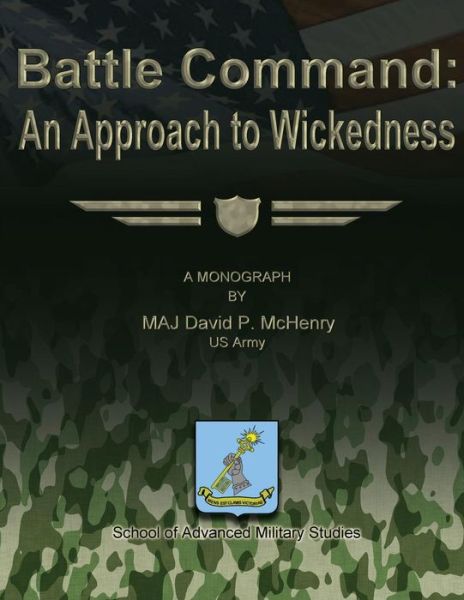
Powiedz znajomym o tym przedmiocie:
Battle Command: an Approach to Wickedness
Us Army Maj David P Mchenry
Battle Command: an Approach to Wickedness
Us Army Maj David P Mchenry
Publisher Marketing: There may be a doctrinal showdown forming. On one side is the stalwart legacy of Army doctrine with its heritage of systematic processes, catchy acronyms, checklisted approaches, and historically proven results. On the other side, a xenophilic contender with selected philosophic underpinnings from a vast array of theories and professional practices, with a complicated, if not unintelligible lexicon, suggesting a method without methodology, and possessing a historically ambiguous application. This forming showdown centers on whether-or-not the military has recognized the increasing complexity of framing the problems encountered in the operational environment. Further, the proponents of the contending approach, referred to as Design, argue that existing Army doctrine is insufficient to address these complex problems. However, many practitioners argue that the Army successfully addresses problems in this complex environment every day. What both sides have failed to do is adequately survey existing Army doctrine to determine whether sufficient methodology already exists. In surveying doctrine, the sides may discover that it is not one or the other, but rather one fits within the other. This monograph proposes that current Army doctrine provides an adequate tool to achieve the desired results proposed in the concepts of operational Design. Because Army doctrine prescribes approaches that solve problems, it is important to understand the nature of problems, especially as they relate to the operational environment. Problems range from well-structured, easily defined problems with attainable solutions; through medium-structured, difficult to define problems without routine solution; to ill-structured, problems without clear formulation or solution. There are two broad approaches to addressing ill-structured problems. First, a problem-focused approach which prioritizes a robust knowledge of the environment from which the problem has emerged. Second, a solution-focused approach that emphasizes the power of proposing solutions as the vehicle to gain understanding of the ill-structured problem. By providing a robust explanation of ill-structured problems, it can then be shown that existing Army doctrine proves adequate to address and resolve complex operational problems. The doctrinal precept of Battle Command is the Army's solution-focused approach. Commanders must understand the nature of their environment, the disposition of the adversary, and the capabilities of friendly forces in order to frame the operational problem. From this understanding they visualize broad approaches to solve that problem. It is through that visualization of solution that commanders gain a true appreciation of the context of the problem. This monograph will demonstrate that the doctrinal precept of Battle Command provides a complete expression for addressing ill-structured problems.
| Media | Książki Paperback Book (Książka z miękką okładką i klejonym grzbietem) |
| Wydane | 26 sierpnia 2012 |
| ISBN13 | 9781479200788 |
| Wydawcy | Createspace |
| Strony | 62 |
| Wymiary | 216 × 280 × 3 mm · 167 g |
Zobacz wszystko od Us Army Maj David P Mchenry ( np. Paperback Book )

 Świąteczne prezenty można zwracać do 31 stycznia
Świąteczne prezenty można zwracać do 31 stycznia

